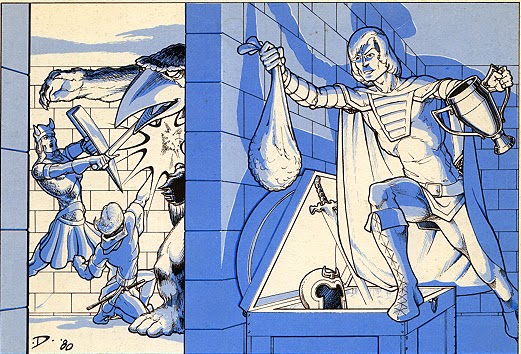I have to say, the player of Rhovanor the Elf has been a real champ so far.
He started off as a 'Lamentations of the Flame Princess' Elf in a solo one-on-one game where I did not pull any punches. Poor Rhovanor got cursed, mutated, had mental insanities afflicted upon him via dark magic... He has since gotten rid of the physical mutations, but he still has an unnatural taste for human flesh that he tries to fight! The character has suffered through countless indignities too. (At some point he had to drink goblin piss to survive. Long story, I'll spare you the details. Or perhaps I've already shared that story in my previous Rhovanor posts, I don't remember at the moment and I am digressing.)
So anyway, Rhovanor started off needing 3000 XP to reach 2nd level. Then when he joined an ongoing campaign I was starting with other players, we changed to Castles & Crusades and he became a Class-and-a-Half Fighter/Wizard, needing 3300 XP to level up. I have recently decided that I'd remove the Class-and-a-Half option from the game and just leave normal Multi-Class, which means he now needs 5050 XP to level up!
The player does make jokes, but I have to say he's been a real pro, the kind of player a DM dreams about who will understand the needs of a campaign and story consistency with a character and take one on the chin for the team.
I joked via phone texts that it's as if he was on a boat and Level 2 is an island. Every time he begins to see land from afar, a sudden wind carries his boat away from the island. He jokingly replied that he was basically playing 'Rhovanor the Survivor'.
Indeed.









